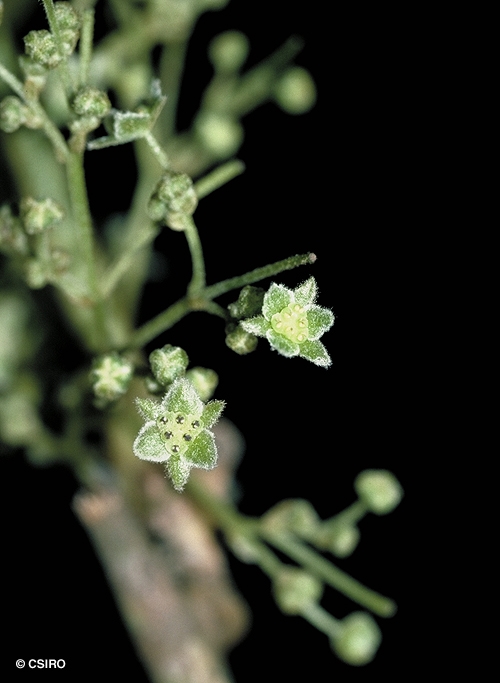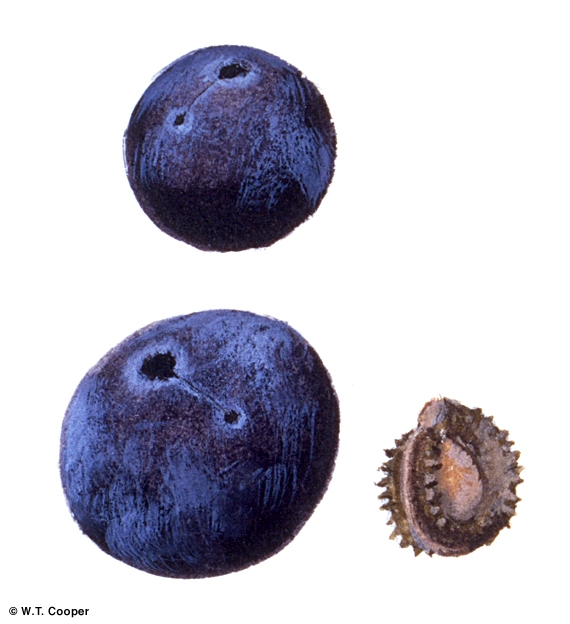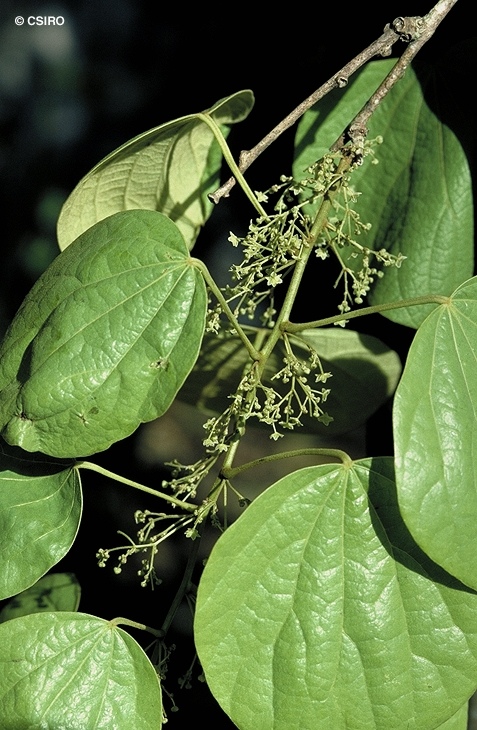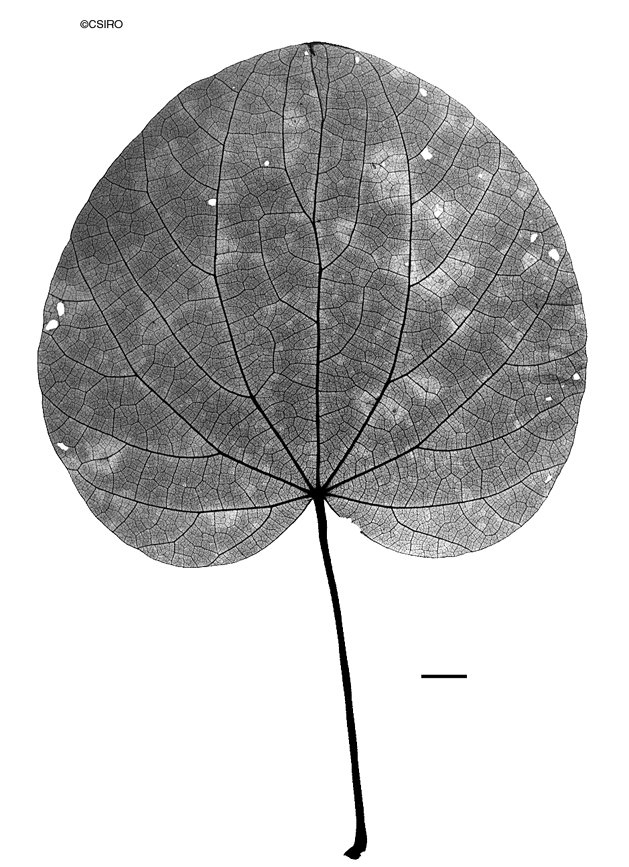Australian Tropical Rainforest Plants - Online edition
Legnephora moorei (F.Muell.) Miers







Miers, J. (1867) Annals and Magazine of Natural History ser. 3. 19: 90.
Round-leaf Vine; Wild Grape; Vine, Big-leaf; Native Grapes; Grapes, Native; Grape, Wild; Big-leaf Vine; Vine, Round-leaf
Vine stem diameters to 9 cm recorded. Dead bark dark brown.
Leaf blades broadly ovate to orbicular, about 7.5-17 x 7.5-17 cm, petioles hairy, about 6.5-14 cm long, grooved on the upper surface. Usually about 4-8 veins radiating from the base of the leaf blade. Underside of the leaf blade usually pale green to almost white from the dense covering of hairs. Twigs rather pithy, clothed in golden brown hairs. Oak grain in the wood and bark of the twigs.
Male flowers: Inflorescence hairy. Flowers about 5-7 mm diam., pedicels about 7 mm long. Sepals in two whorls of three or four, outer sepals about 2 x 1 mm, inner sepals about 2 x 2 mm. Petals six to eight, glabrous, each enveloping a stamen. Petals about 0.8-1 x 1 mm, base cordate, apex truncate. Stamens about 1 mm long, anthers globose, about 0.25 mm long, filaments green and fleshy. Pollen pale yellow. Female flowers: Inflorescence about 35 mm long, clothed with fine golden hairs. Flowers about 6 mm diam., pedicels about 4 mm long. Sepals in two whorls of three. Outer sepals about 2.5 x 1 mm, hairy on both surfaces, inner sepals about 2 x 1.8 mm, hairy on both surfaces. Petals absent ? Staminodes six, fleshy, green, about 1 x 1 mm. Carpels three, each about 1-1.5 mm long, densely clothed in white silky hairs. Ovules one per carpel. Stigma flat and lobed.
Fruits laterally compressed, about 12-14 x 13-16 mm. Style remnants attached close to the pedicel near the base of the fruit. Endocarps about 9-10 mm diam., difficult to measure because of the attached tissue. Embryo horseshoe-shaped. Radicle about 0.5 mm diam., slightly longer and slightly thicker than the cotyledons.
Features not available.
This species is suspected of being poisonous to stock but feeding trials have given inconsistent results. Fruits have been reported to make children ill. Everist (1974).





